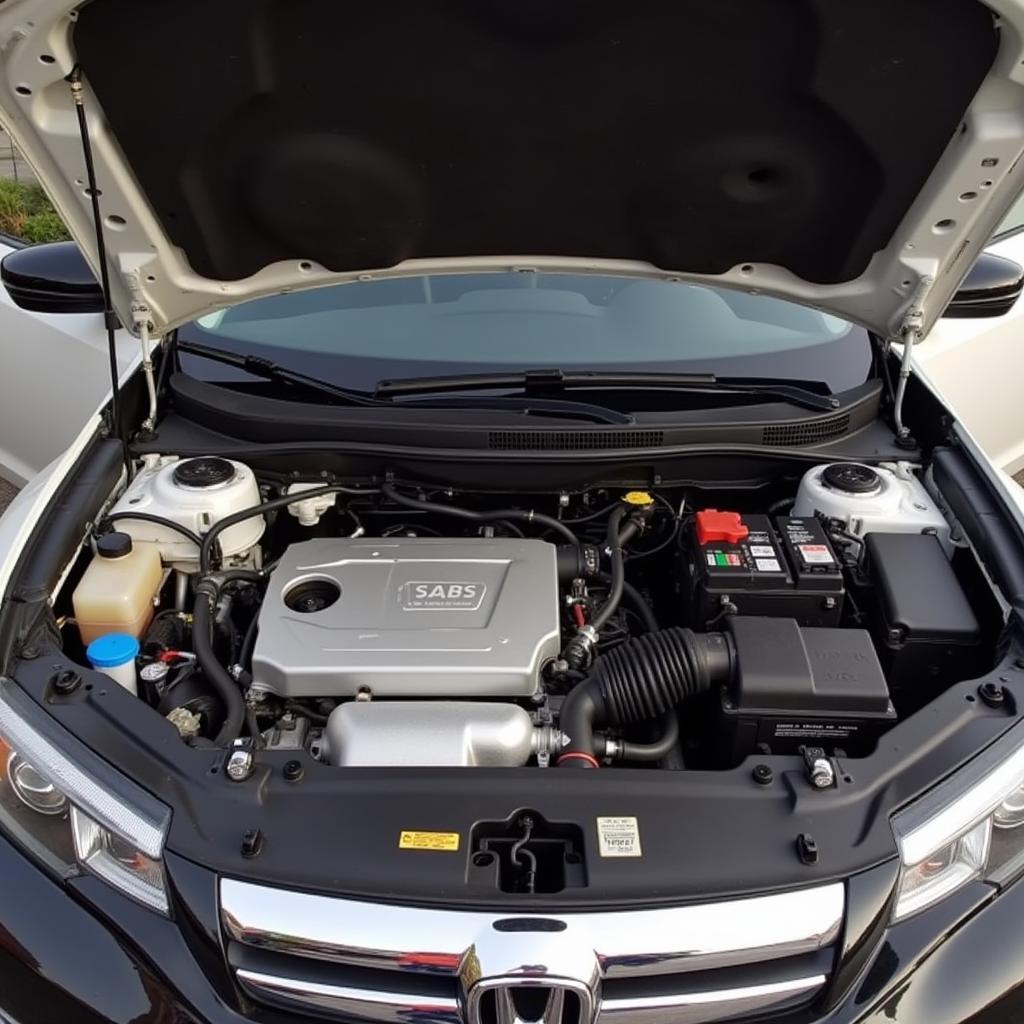The brake warning light on your 2006 Honda Civic is a crucial safety feature, designed to alert you of potential braking system issues. If this light illuminates on your dashboard, it’s essential not to ignore it. Addressing the underlying cause promptly is crucial to ensure your safety and the safety of others on the road. This comprehensive guide will delve into the common reasons behind a 2006 Honda Civic brake warning light, potential solutions, and when to seek professional help.
Common Causes of a 2006 Honda Civic Brake Warning Light
Several factors can trigger the brake warning light in your 2006 Honda Civic. Let’s explore some of the most prevalent culprits:
1. Low Brake Fluid Level
One of the most frequent reasons for the brake warning light to appear is low brake fluid. Your car’s braking system relies on hydraulic pressure to function effectively. When brake fluid levels drop, this pressure diminishes, leading to reduced braking performance and potentially dangerous situations.
Solution: If you suspect low brake fluid, park your car on a level surface and check the brake fluid reservoir. Consult your owner’s manual for the reservoir location. If the fluid level is below the minimum mark, add the recommended brake fluid type. However, simply topping off the fluid won’t solve the issue if there’s an underlying leak. It’s vital to have your braking system inspected by a qualified mechanic.
2. Worn Brake Pads
Brake pads are designed to wear down over time. As you apply the brakes, friction between the pads and rotors generates the stopping power needed. When brake pads reach a certain level of wear, a sensor embedded within the pad will contact the rotor, triggering the brake warning light.
Solution: If your brake pads are worn, it’s crucial to have them replaced promptly. Driving with excessively worn brake pads can damage the rotors, leading to costly repairs.
3. Faulty Brake Light Switch
The brake light switch is a small but vital component that activates your brake lights when you press the pedal. In some cases, a malfunctioning brake light switch can also trigger the brake warning light on the dashboard.
Solution: Diagnosing a faulty brake light switch typically involves testing for continuity with a multimeter. If the switch is found to be defective, replacing it is a relatively straightforward procedure.
4. ABS Problems
Your 2006 Honda Civic is equipped with an Anti-lock Braking System (ABS), enhancing safety by preventing wheel lockup during hard braking. If the ABS system encounters an issue, a separate warning light will usually illuminate on the dashboard. However, in some instances, the general brake warning light might come on as well.
Solution: Addressing ABS problems often necessitates specialized diagnostic equipment. It’s advisable to take your vehicle to a qualified mechanic or dealership for proper diagnosis and repair.
 Honda Civic ABS control module
Honda Civic ABS control module
5. Master Cylinder Failure
The master cylinder is the heart of your car’s braking system, responsible for converting pedal pressure into hydraulic force that acts on the brakes. If the master cylinder fails, it can cause a significant loss of braking power and illuminate the brake warning light.
Solution: Master cylinder failure is a serious issue requiring immediate attention. If you suspect master cylinder problems, do not drive your car. Instead, have it towed to a trusted mechanic for inspection and repair.
Troubleshooting Tips
Before heading to a mechanic, here are a few troubleshooting steps you can try:
- Check Your Parking Brake: Ensure the parking brake is fully released. Sometimes, an improperly disengaged parking brake can trigger the warning light.
- Inspect the Brake Fluid Reservoir Cap: Make sure the brake fluid reservoir cap is securely tightened. A loose cap can lead to pressure fluctuations and activate the warning light.
- Consult Your Owner’s Manual: Your owner’s manual is a valuable resource for understanding the specific warning lights on your 2006 Honda Civic’s dashboard and their potential meanings.
When to Seek Professional Help
While some brake warning light issues might have simple solutions, it’s essential to remember that brakes are a critical safety system. If you’re unsure about the cause of the problem or uncomfortable attempting repairs yourself, it’s always best to err on the side of caution and seek help from a qualified mechanic.
Expert Insight:
“Ignoring a brake warning light can have serious consequences,” says John Smith, a seasoned automotive technician with over 20 years of experience. “Brakes are your car’s most crucial safety feature, and addressing any potential issues promptly is essential for your safety and the safety of others on the road.”
Conclusion
Addressing a brake warning light in your 2006 Honda Civic should always be treated as a top priority. By understanding the common causes outlined in this guide, you’ll be better equipped to identify the potential issue and take appropriate action. Whether it’s a simple fix like adding brake fluid or a more complex problem requiring professional attention, ensuring your braking system is in optimal working order provides invaluable peace of mind behind the wheel.

